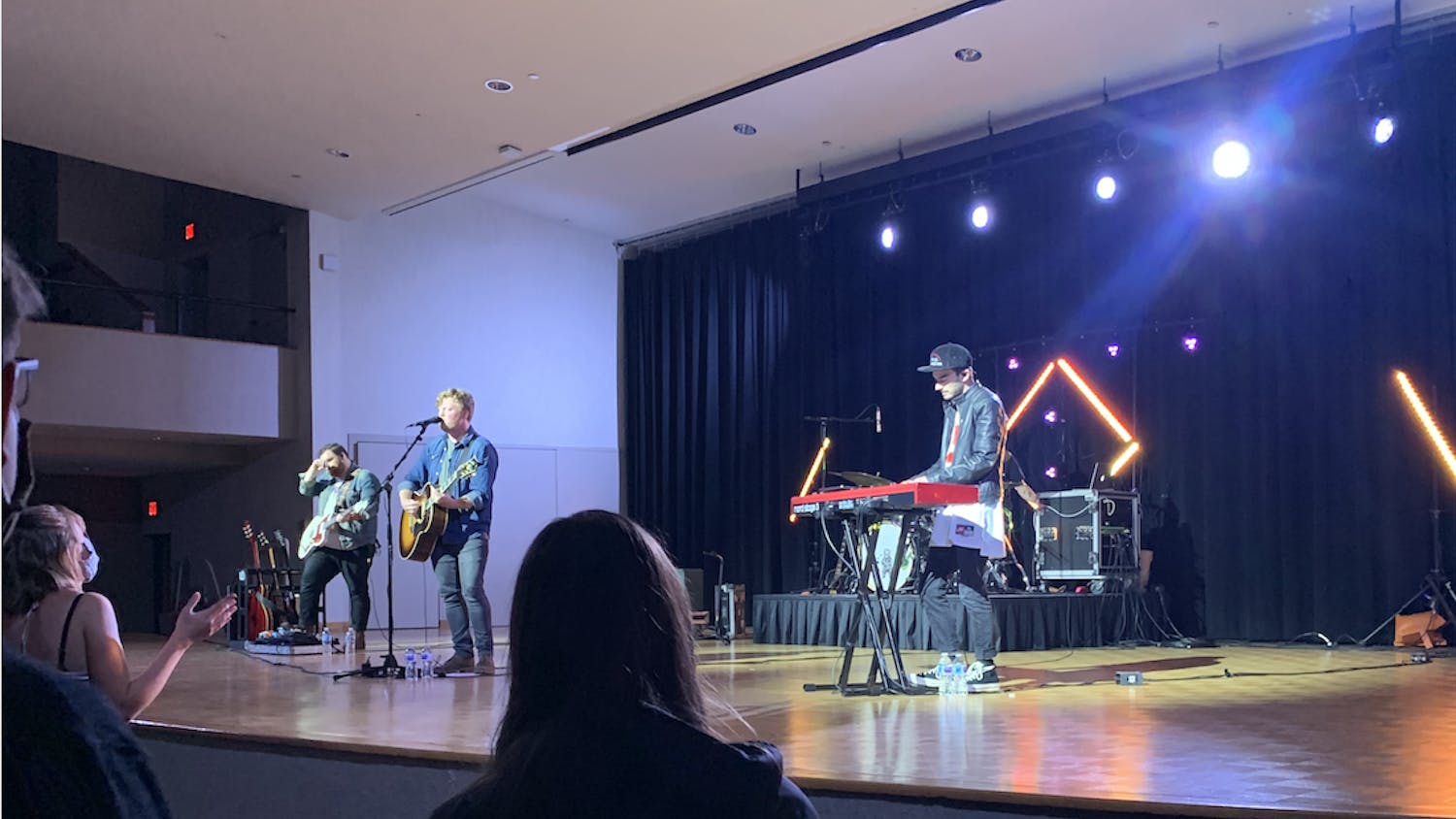When “Folklore” was released, I began my review by saying the surprise drop was very uncharacteristic of Taylor Swift.
That aged well.
On Dec. 11, Swift surprise-released “Evermore” as the “sister album” to “Folklore.” The album features 15 songs that rise from the grayscale reflection of “Folklore” to budding romances and personal reinventions.
Again working with icons Aaron Dessner, Jack Antonoff and Bon Iver’s Justin Vernon, the greatest strength of the album is its intentional and powerful production.
In “Marjorie,” Swift uses a chiming and fluttering melody partnered with full-bodied chords in such a way that the lyrics seem to be levitating along. As a tribute to her grandmother, this creates a heavenly moment as Swift reflects on their connection.
Further contributing to this feeling, Swift features operatic vocalizations from her grandmother in the final chorus as she sings, “And if I didn’t know better, I’d think you were singing to me now. And if I didn’t know better, I’d think you were still around.”
Later, the title track, “Evermore,” begins with a much moodier, rich piano melody. The sound reflects the storytelling of processing a traumatic loss.
“And I was catching my breath, staring out an open window, catching my death,” Swift sings. “And I couldn’t be sure, I had a feeling so peculiar that this pain would be for evermore.”
This mood, however, turns with the entrance of Vernon, who brings a chaotic moment of doubt and anxiety. The tempo drastically increases as he questions every decision they’ve made.
“Whether weather be the frost or the violence of the dog days, I’m on waves out being tossed — is there a line I could just go cross?” he sings in his famous falsetto.
In the last chorus, the slow melody returns as the two sing together with a new purpose in the pain, reflected in the subtle change in lyrics, “I had a feeling so peculiar — this pain wouldn’t be for evermore.”
While impressive, there is something left for want from “Evermore.”
For a “sister album,” “Folklore” completely outshines “Evermore” in songwriting. No song stands alone — each is layered with storytelling and references to other songs in the album. The more you listen to it, the more the artistry unfolds.
Aside from a couple of tracks, “Evermore” exists as an album of singles — there’s not as much to ruminate on. Additionally, the songs rarely deviate from heartache and love, whereas “Folklore” covers much more self-discovery and coming-of-age.
Where “Evermore” does show development is in its character.
“Folklore,” with its breathy singing and melancholic indie-inspired themes, could have easily come from someone like Lana Del Ray or Phoebe Bridgers.
In contrast, “Evermore” highlights Swift’s classic strengths as a songwriter — her delicate timbre, romantic instrumentation and powerful bridges.
A perfect example of this is “Champagne Problems.” The narrative (a woman rejecting a marriage proposal) builds surrounded by plucky chords that showcase Swift’s voice. In a sort of broken-down wedding ballad, the story spirals from the set-up for the perfect proposal to the self-sabotage that causes the woman to run away.
In some ways, you sympathize with the man who loved the woman so purely, but you also empathize with the woman who has to learn how to love herself first.
“Sometimes you just don’t know the answer ‘til someone’s on their knees and asks you,” Swift crescendos in the bridge. “‘She would have made such a lovely bride, what a shame she’s stuck in her head,’ they said. But you’ll find the real thing instead, she’ll patch up the tapestry that I shred.”
As someone who grew up listening to Swift, this album felt familiar from the beginning. To me, it feels like Swift stepped strongly into a new aesthetic with “Folklore,” then wrote “Evermore” as she became more comfortable with the style. She clearly had more fun with it.
That said, it could’ve benefited from the same curation and perfection that “Folklore” carried.
As “sister albums,” each lacks something the other could benefit from. “Evermore” just happens to lack the thing that separates it from a general, good album to something that transcends a particular fanbase and era of music.




